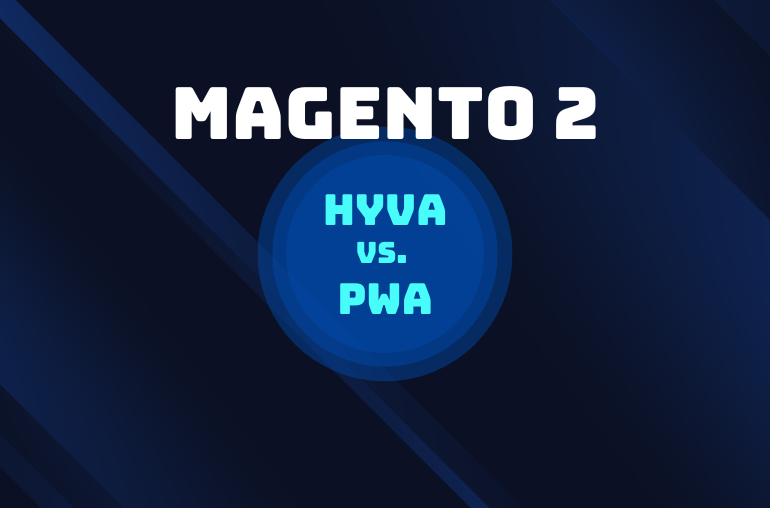Table of contents
With Progressive Web App being the new approach to web development everywhere, Magento themselves haven’t been standing still either and introduced a new way to push for more PWA adoptions with PWA Studio. To best help you understand this new approach better, our article today will try to compare PWA storefront with the traditional Magento theme, and help you decide if this new approach is really worth it.
Understanding a Magento theme
Definition
Magento theme, in layman’s terms, is a combination of custom templates, layouts, styles, and images to bring an unifying look and feel to your storefront as well as to your Magento admin.
How it works
The traditional Magento themes follow an inheritance concept, which means that custom Magento themes are always built on top of a base theme provided by Magento (Blank) and are highly dependent on the core Magento application for functionality. Magento theme is made to be easily installable and configurable for non-tech-savvy merchants such as yourself, but it does come with its own set of limitations due to the inherent drawbacks of the infrastructure in use (traditional CMS).
Examples
Magento themes can be found on various platforms on the Internet, most notably on Magento marketplace and ThemeForest. Especially on ThemeForest, for example, there are over 600 Magento themes and templates in various industries.

PWA storefront and how it is different
Definition
A PWA storefront, in short, is a storefront powered by Progressive Web App which is the latest advancement from the Web to drive bleeding-edge features and performance enhancements.
How it works
As opposed to the inheritance concept adopted in Magento themes, PWA storefronts are more flexible due to the way that their infrastructure is connected—headless and decoupled from the Magento backend. This infrastructure is made possible with the use of development tools such as PWA Studio to ensure that the storefront(s) is modular in its nature and equipped with the latest features and technologies.
Examples
PWA storefront is still behind in its number of available examples, but it’s getting there. For a basic and barebone experience, we recommend Venia storefront by Magento or our own Siminia storefront. And in case you want a more engaging experience, the Fashion storefront should be just right for you as it was tailored for the fashion industry to deliver a special focus on the visual.

Comparing Magento theme vs PWA storefront
Overview
PWA storefronts make more sense as a long-term, practical, albeit challenging solution—but that doesn’t mean Magento themes don’t have their place either, as it’s still a great way for new Magento merchants to get to know the platform and learn about the basics of a Magento storefront, as well as how an engaging storefront can drive more conversions.
| Magento theme | PWA storefront | |
|---|---|---|
| Ease of installation | ✓ | X |
| Number of themes/storefronts | ✓ | X |
| Flexibility and scalability | X | ✓ |
| Reliability | X | ✓ |
| Features | X | ✓ |
| Performance | X | ✓ |
| Cost advantage | ✓ | X |
Going into the details
Ease of installation
The traditional Magento theme is old, but you can’t say that it didn’t serve its purpose—that is to make changing the appearance of storefronts possible and more approachable to even the layman. Merchants using Magento themes can change the appearance of their storefront with a simple install/uninstall of either a Magento theme of their own, or of a third-party Magento theme. By this way, it doesn’t take much effort, if at all, for merchants to deliver a polished and engaging storefront experience.
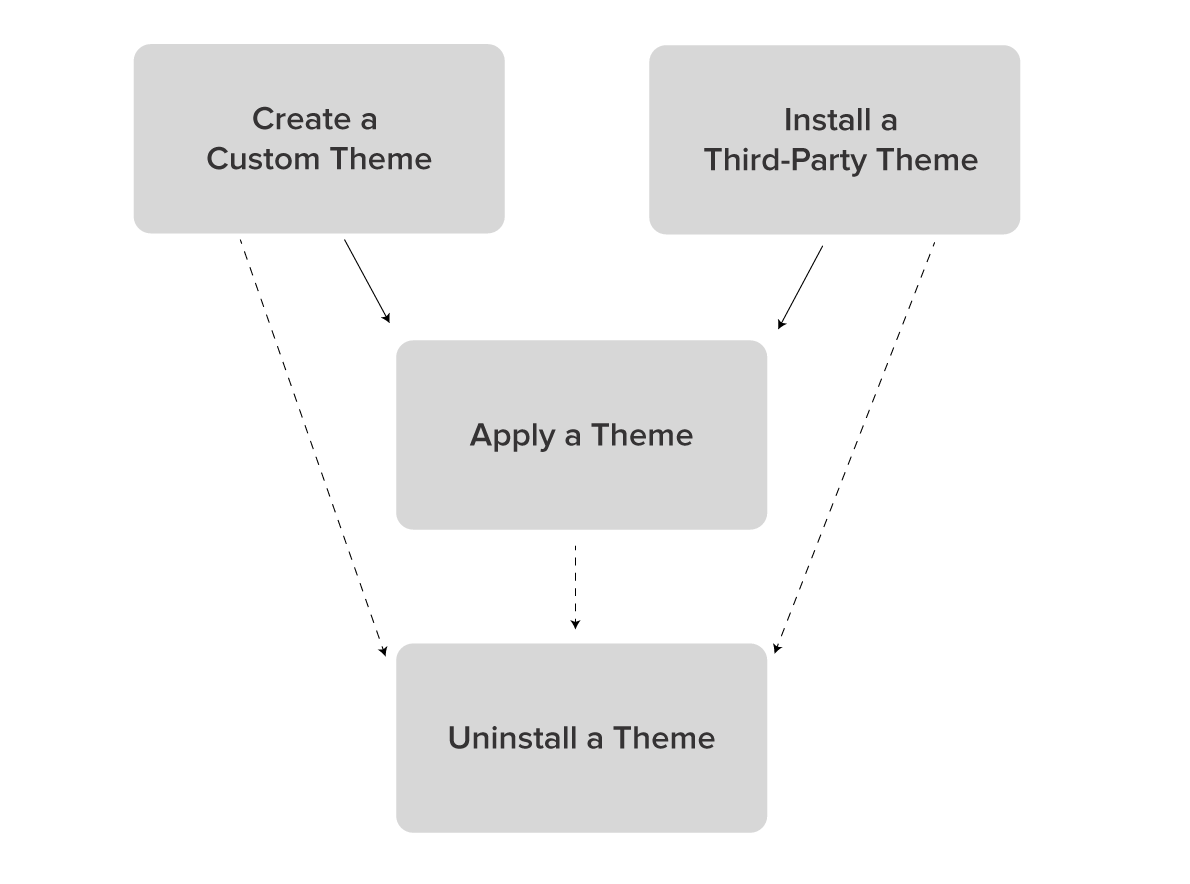
Source: Magento Themes Overview
PWA storefront, on the other hand, follows a different philosophy (headless CMS) that values practicality and functionality over ease of use. This is why the typical installation process of a PWA storefront can be considered too technical and more developer-oriented to the average merchant.
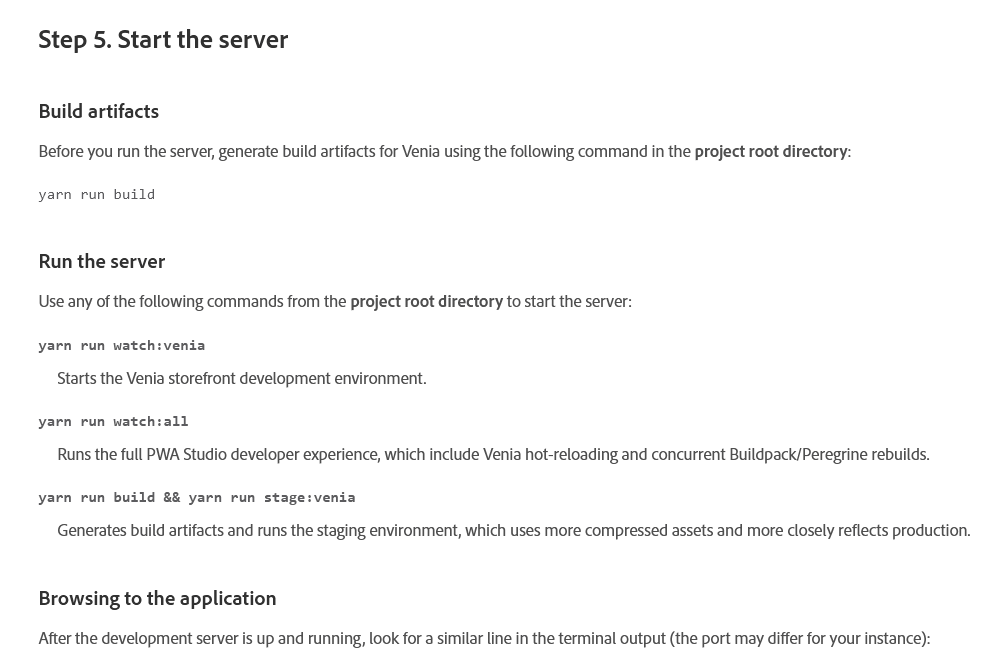
Source: Magento
Number of themes/storefronts
Thanks to the inheritance concept, developers working on Magento themes can have a solid and convenient base theme (Blank) as a foundation with which they can create custom Magento themes with relatively little effort. There are currently more than 600 Magento themes and templates in various industries, and this number is still growing to this day.
Being a relatively new tech, PWA storefronts don’t have the same luxury of having numbers as their strength. This lack of variety and availability of PWA storefronts—from our perspective as a solution provider who has been working to deliver more PWA storefronts to Magento merchants—is to be expected since the whole development process of PWA storefronts isn’t as easy as compared to its Magento themes counterpart.
However, you can be assured that the number of PWA storefronts is rapidly growing, and will likely exceed that of Magento themes’ in no time at all. From our end personally, we have plenty of PWA storefronts that will be ready to hit the market in the near future, effectively help move the adoption of PWA storefronts forward.
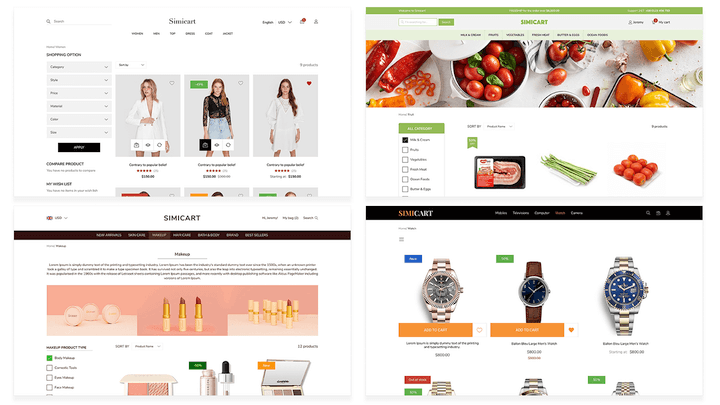
Flexibility and scalability
Since developers of Magento themes can only change certain theme files, the whole development process is restrictive in nature. This shouldn’t affect small to mid-sized businesses, but for larger businesses that want to roll out regular appearance changes to their storefronts, this lack of flexibility might lead to further scalability issues.
To address the old scalability and flexibility issues with Magento themes, PWA storefronts adopt headless architecture, which is a system that has its presentation layer (e.g., Magento storefronts) decoupled from its business logic layer (e.g., Magento backend). It’s thanks to this decoupling of the two fundamental layers that developers working on your storefront can have better flexibility in development, consequently making it a more scalable approach for emerging brands.
Stores that have gone the PWA route reported their successes positively, with an average conversion rate uplift reaching 52%.
Recommended reading: Headless Commerce, and How It Benefits Merchants
Reliability
Reliability is a concern for Magento themes. Since a custom Magento theme inherits most of its files from a parent theme and has its backend tightly coupled with its frontend, an update to the parent theme that goes wrong (which is rare but possible) can break your entire storefront and leave your business paralyzed for days on end.
A PWA storefront, in contrast, isn’t built around a parent theme and is headless in its nature, which means the storefront (frontend) is decoupled from its Magento backend, and does not communicate directly to it but instead through a middle API layer. And since the storefront is now less tightly coupled with the Magento backend, updates can be installed individually on the backend without breaking the frontend; coupled with the fact that PWA storefronts are basically React modules put together, updates for your storefront can also be rolled out in a risk-minimizing manner—one module after another, ensuring a safer operation.
Features
In terms of features provided, Magento themes are functional in a sense, but they don’t really excel in this regard, as they’re still your traditional websites with limited hardware accessibility.
The features provided by PWA storefronts, on the other hand, rival native mobile apps thanks to its deep integration with the system of the device in use. PWA-powered websites leverage the latest technologies of the Web to deliver features previously exclusive to native mobile apps, such as push notifications, location services, add to home screen, and offline capabilities—all while still retaining the benefits from the Web.
Related article: 9 Must-have Features of a PWA for eCommerce
Performance
With Magento themes, the overall performance of your storefront can take a hit as developers working on your Magento theme have less control over what they can make changes to; and even though some Magento themes claim to be optimized for performance, the difference between an optimized and unoptimized one is pretty much negligible.
Performance of a PWA storefront has the potential to be vastly better than its Magento theme counterpart due to its use of cutting-edge technologies. PWA Studio storefronts use GraphQL for their data modeling, which is a modern, more efficient method of reducing network traffic and processing speed.
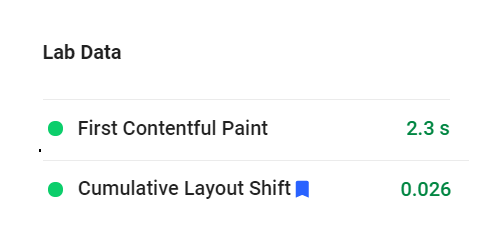
Additionally, in terms of perceived performance, a PWA storefront also brings a connected and smooth-flowing experience to shoppers as a result of its superior caching mechanism (service worker). So not only does your PWA storefront is fast, it’ll feel fast even when the shopper’s connection is slow and unstable.
Cost advantage
For small to mid-sized businesses who don’t require extensive customization and features for their storefront, Magento themes naturally have the cost advantage. This is owing to the fact that the development process of a typical Magento theme has really matured with time, and merchants wanting to bring a new look to their storefront can easily choose a Magento theme from the vast selection of Magento themes on ThemeForest, install it, and benefit from all the visual and performance enhancements that come with the installed theme.
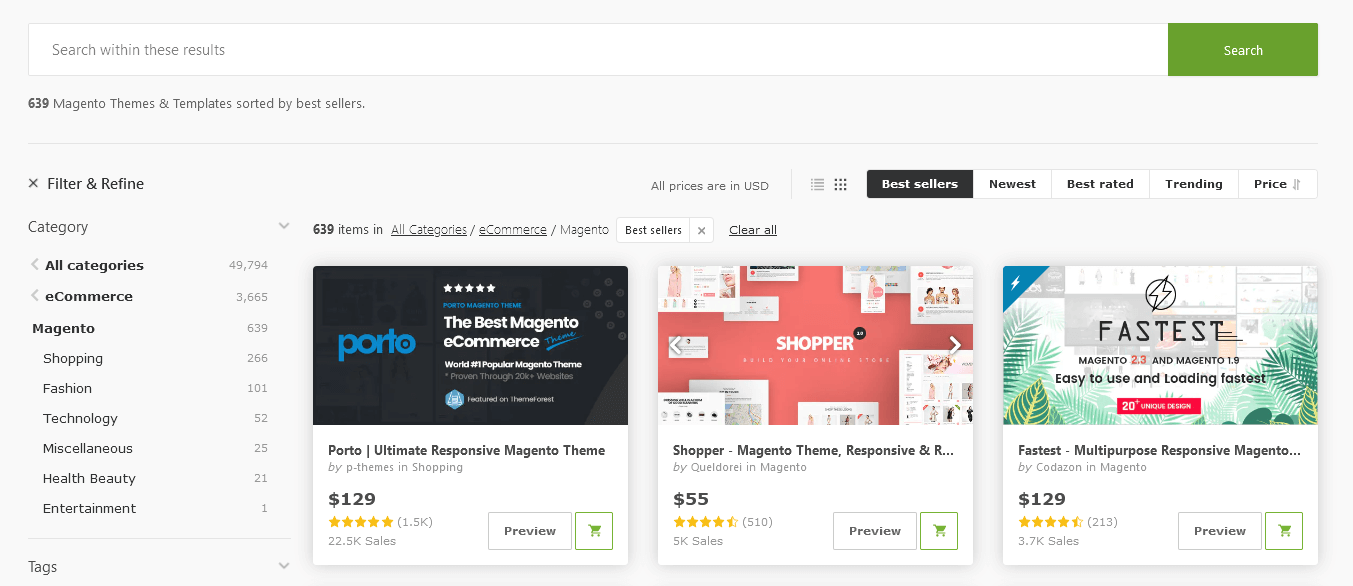
The same thing can’t be said about PWA storefronts, since availability is still a major issue with this new approach. In order to have a PWA storefront, for example, you need to either install the free Venia storefront provided by Magento, or hire a dedicated team of developers to work on your PWA storefront, which isn’t a cheap nor easy solution when all the costs are considered.
On the plus side, a PWA storefront requires less Magento-specific knowledge than developing a traditional Magento theme. The tools and concepts needed in a PWA storefront development are also more commonplace among front-end developers, so a PWA storefront might be a more cost-effective solution in the long run, as it is easier to hire a frontend developer to work on your PWA storefront rather than hiring a Magento developer.
Related article: How much does it cost to build a PWA for Magento?
Try a PWA storefront
The current selection of PWA storefronts isn’t that big, but it’s rapidly growing. We recommend a quick look over SimiCart PWA Demo for the look and feel of a basic PWA storefront.
Here at SimiCart, we offer feature-packed and easy-to-install PWA storefronts for your business. With our solution, you can have all the benefits of a PWA storefront with none of the drawbacks.
Read more:
How to Integrate PWA in Magento 2



